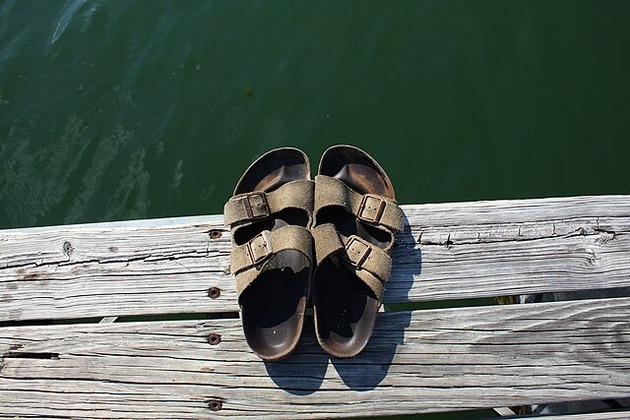The Ultimate Guide to Organizing Your Binders
7Newswire
13 Mar 2023, 11:15 GMT+10

Did you know that in 2022, stationery products made up a $24.2 billion global industry? Come 2030; market experts estimate it to grow further and reach a whopping $34.7 billion value.
One of the chief factors driving that growth is the projected rise in college enrollment. Likewise, the rapid increase in new business openings will fuel that growth.
So whether you're a student or a business owner, you'd need access to stationery products. Such includes binders and binder accessories that you'll use to organize paperwork.
However, to ensure that you can maximize your binders, you must also know how to organize them. Otherwise, you'll lose track of what's inside if you keep filling them with sheets of paper.
To that end, we created this comprehensive guide to binder organization. So read on to discover the top strategies to help you make the most of these nifty tools.
Understand Your Binder Options
Most types of binders you'll find today are the traditional 3-ring ones. They're the industry standard, used in both academics and offices. They feature a hardbound cover that you open like a typical book.
If you decide to get 3-ring binders, note that they're best used with folders. Without folders, you'd have to hole-punch all your paperwork, which can be tedious.
A zipper or zip-up binder is like the standard 3-ring but offers more storage options. For example, they come with extra pockets for papers and even writing implements.
The difference is that, as their name suggests, zip-up binders come with zippers. This extra feature allows you to close them up entirely.
Pick the Right Binder Ring Type
Effective binder organization means you can maximize the space inside each binder. That way, you can minimize the number of binders you need.
To achieve that goal, you must pick the right binder ring type. This feature determines the binder's capacity.
You have two primary ring binder type options: round-ring and D-ring.
Also known as O-ring binders, round-ring binders feature circular metal rings. On the other hand, D-ring binders have rings that look more like the capital letter D.
That shape difference results in a D-ring having a greater holding capacity. This is because the straight line in the "D" makes the binder's contents lie flat. This maximizes the space inside the binder, letting you fill it with more paperwork.
Thus, if you need a binder that can accommodate over 200 pages, you can get a 1-inch D-ring binder. But if you only need to fill it with less than 200 pages, you can get a 5/8-inch or 1-inch O-ring binder.
Decide How Many Binders to Get
The average college student attends four to five classes per semester. If that applies to you, consider getting a binder for each, plus another, to serve as your "master" binder.
So if you have four classes, you should have at least five binders, but if you attend five classes, get at least 6.
Implement a Color-Coding System
Once you've determined the number of binders you need, color-code them. Doing so simplifies organization since you can associate one color with one theme. It also helps hone your memory because you must remember which color goes with which class.
Here's an example of a color-coding system you can use for school:
- Black for your master binder
- Green for economics
- Red for English
- Orange for another language class
- Blue for science
- Purple for history
Next, create a master list of your color-coding system and insert this in your master binder. Make sure it goes somewhere in the front. That way, you can quickly check which color goes for which class or subject in case you forget.
Using the same colors for your dividers and folders (we'll explain these in more detail below) is also a good idea. For instance, if you're using green for economics, use green partitions or folders too. You can also label your tabs with a green pen or highlighter.
Choose Binders With Protective Covers
If you opt for 3-ring binders, ensure their covers are solid and made with waterproof material.
A good example is a vinyl-over-cardboard binder. The vinyl material covers several cardboard sheets, making the cover firm and waterproof.
If you want to go with zip-up binders, ensure you choose those with waterproof covers. Their fabric should also be dense enough to prevent tears. Lastly, they must have multiple seams (e.g., straight and flat felled seams).
Multiple seams are vital for zipper binders because they can also serve as bags. If they only feature a single stitching method, the extra load can cause the stitches to unravel.
Gather Your Other Binder Must-Haves
Aside from the binder, you'd also need filler paper, dividers, and folders. You may also need sheet protectors for more critical paperwork. If you want easy access to writing implements, get a pen or pencil pouch, too.
Filler Paper
Whether you need to use binders for college or office work, it's best to get reinforced paper.
Reinforced filler paper comes with a polyester strip on one side. That strip strengthens the sheet's side with the holes. That makes it more difficult to rip out or tear the paper accidentally.
Dividers
Dividers allow you to create sections inside your binders, further simplifying binder organization. They're like regular paper but have a small protruding tab on one side. You can then label that tab based on the contents of the section it divides.
You can customize blank index tabs with titles on both sides for better organization. You can label them with tags like "Notes," "Reference Materials," or "Projects."
Pro tip: Consider getting mylar-coated tabbed binder dividers.
Mylar is a polyester film made of stretched polyethylene terephthalate (PET). When used in dividers, they make the protruding tabs resistant to tears and smudges.
That's incredibly helpful, as you'll handle the tabs a lot as you sift through your binder pages.
Folders
Folders for binders are perfect for keeping loose-leaf paper sheets without holes. The folders have punched holes, making inserting them in the binders' rings easy. Then, when you open them, you'll see a pocket on each side where you can put the unpunched sheets.
So with folders, you don't have to worry too much about creased or wrinkled paperwork. Just make sure to choose those with stiffer material for better protection.
Sheet Protectors
These are see-through plastic sheets with an opening on one side, usually at the top. Their transparency allows for easy viewing of their content. So, you can insert two pages in one sheet, back to back, as long as they don't have stuff written on both sides.
When choosing sheet protectors, go for those that are acid-free and non-stick.
Acid-free protectors help ensure the ink on the pages doesn't smudge or transfer. Their being non-stick also prevents the pages from getting stuck inside. Likewise, it keeps the protectors from sticking to other paper or plastic sheets.
You don't have to use sheet protectors for every page in your binder. Instead, you can use them only for essential paperwork you know you'll use often. That way, the pages can remain intact for as long as possible.
Pencil Pouch
According to some estimates, over 8 million trees get cut each year to produce pencils. That's a good enough reason to make the most out of each pencil you have. However, you can't do that if you keep losing your writing implements.
A pencil pouch attached to your master binder is one of the best ways to keep your pencils (and pens) in one location. It also helps minimize the number of things you must remember to bring.
If you decide to get a pencil pouch, clip this onto your binder's frontmost area. If you put it on the back, it'll create a bumpy writing surface.
Insert a Table of Contents
Inside each of your binders should be a table of contents page. Like in a book, this list organizes all the pages and sections of your binder's contents. It'll help you skip to the partition you're looking for immediately.
You may wonder why you need a table of contents if you plan to use dividers. One reason is that a table of contents gives you more space to describe what each partition contains.
For example, you may label a divider with "Notes." Since that's too vague, you'd want a better description. You can use your table of contents for that.
However, ensure you update your table of contents as you insert more pages into your binder.
Organize Your Binders With These Tips
Remember: Binders exist to help users organize paperwork and stay on top of their studies or work. However, they can only do their job if their users use them appropriately. That means sorting them out using accessories like dividers, folders, and sheet protectors.
So, use our tips to make your binder organization a breeze. And as a final tip, make it a habit to clean them once every week or two.
If you like this article, we have more informative reads to share. So, check out our other latest news and blog posts! Share
Share
 Tweet
Tweet
 Share
Share
 Flip
Flip
 Email
Email
Watch latest videos
Subscribe and Follow
Get a daily dose of Maryland Leader news through our daily email, its complimentary and keeps you fully up to date with world and business news as well.
News RELEASES
Publish news of your business, community or sports group, personnel appointments, major event and more by submitting a news release to Maryland Leader.
More InformationInternational
SectionThousands gather in Himalayas as Dalai Lama celebrates 90th birthday
DHARAMSHALA, India: The Dalai Lama turned 90 on July 6, celebrated by thousands of followers in the Himalayan town of Dharamshala,...
Fans perform WWII-era Fascist salute at Marko Perković’s mega concert
ZAGREB, Croatia: A massive concert by popular Croatian singer Marko Perković, known by his stage name Thompson, has drawn widespread...
U.S. Treasury Secretary says Musk should steer clear of politics
WASHINGTON, D.C.: Elon Musk's entry into the political arena is drawing pushback from top U.S. officials and investors, as his decision...
TikTok building U.S.-only app amid pressure to finalise sale
CULVER CITY, California: TikTok is preparing to roll out a separate version of its app for U.S. users, as efforts to secure a sale...
Trump defends use of 'Shylock,' citing ignorance of slur
WASHINGTON, D.C.: President Donald Trump claimed he was unaware that the term shylock is regarded as antisemitic when he used it in...
Summer travel in chaos as French air traffic controllers walk off job
PARIS, France: A strike by French air traffic controllers demanding improved working conditions caused significant disruptions during...
Business
SectionFedEx, UPS step up as Canada Post loses market share in strikes
OTTAWA, Canada: With Canada Post struggling to maintain operations amid labour unrest, rivals like FedEx and UPS are stepping in to...
U.S. stocks steady Tuesday despite tariffs turmoil
NEW YORK, New York - U.S. and global markets showed a mixed performance in Tuesday's trading session, with some indices edging higher...
Beijing blamed for covert disinformation on French fighter jet Rafale
PARIS, France: French military and intelligence officials have accused China of orchestrating a covert campaign to damage the reputation...
Birkenstock steps up legal battle over fakes in India
NEW DELHI, India: Birkenstock is stepping up its efforts to protect its iconic sandals in India, as local legal representatives conducted...
Beijing hits back at EU with medical device import curbs
HONG KONG: China has fired back at the European Union in an escalating trade dispute by imposing new restrictions on medical device...
Wall Street reels after Trump invokes new tariffs
NEW YORK, New York - Monday's trading session saw mixed performances across U.S. and global markets, with several major indices posting...













